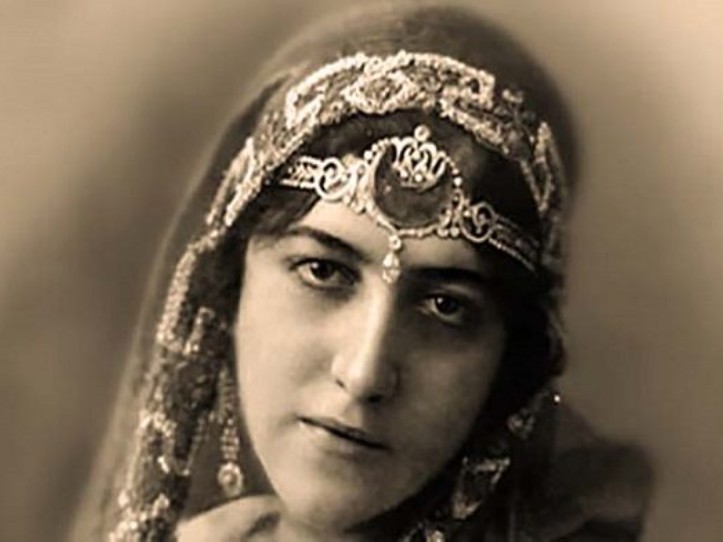SHE started out as a Flamenco dancer from a humble background but became a Maharani when she captured the heart of an Indian Maharaja.
Aged just 16, she was whisked away to Paris to be taught how to become a princess and entered into a life of wealth, privilege and high society as she married into royalty in a story that could form the plot of a Disney extravaganza.
It all began in 1890 when Anita Delgado Briones was born in Malaga. Her family moved to Madrid in search of a better life – one that Anita was to find when she bewitched His Royal Highness the Rajah Jagatjit Singh of Kapurthala.

In Madrid, Anita and her sister Victoria were scouted at dance lessons by promoters who dubbed them ‘The Camelia Sisters’ and were famed for their beauty, leading to famous artists of the day to ask them to model. Being just 16, Anita declined but she was soon to catch the eye of a Rajah.
The sisters had become regular performers at the Central Kursaal, socialising with intellectuals such as Leandro Oroz and Valle-Inclan.
In 1906 many members of Europe’s – and the world’s highest echelons of society came to attend the wedding of King Alfonso XIII and Princess Victoria Eugenia. Among them was the Rajah of Kapurthala. The first time Anita spotted the fabulously dressed man in a white and blue turban adorned with a peacock brooch; it was love at first sight.
The pair were able to make contact with the help of the intellectuals from the Kursaal. When they began their correspondence, Anita was only 16 so produced ‘very childish’ letters said Elisa Vazquez de Gey, authoritative biographer of Anita Delgado. Some of her letters were intercepted by Oroz and Valle-Inclan who felt compelled to ‘help out’ by editing her writing as it was hilariously juvenile. “It could be said that the maharajah fell in love with the letters of the best Spanish writers”, says Eliza.
In fact the correspondence was so successful that just a week after the royal wedding Anita had received a letter of proposal from the maharajah.

After quickly accepting, she was whisked away to Paris where she was taught how to be a princess by many governesses, who showed her etiquette, horse riding and music among other activities.
Anita and the maharajah were married for the first time in Paris, and then again in Kapurthala in 1908, this time in the Sikh rite.
The maharajah had a lavish palace erected for him, reminiscent of Versailles – because he loved all things French, which is where they established their home. This is where Anita’s true reign as the Maharani of Kapurthala began.
Unlike previous maharanis, Anita was very free-willed. She only wore a sari on official occasions, was frequently in the company of men, painted, hunted, played tennis, and drank.
Anita was also known for her philanthropy during the First World War. She recruited and funded weavers to make clothes in her palace, for the Sikh soldiers on the front lines whose uniforms couldn’t face the cold of Europe.
Life was good and she was popular, but in 1920, the maharani fell very ill. A heart ailment meant she spent a long time recuperating in Kashmir, far from her husband.

As they say, while the cat’s away, the mice will play and the rajah succumbed to temptation.
Several affairs drove a wedge in their marriage. Anita waited until her son Ajit was old enough to be the rightful heir and then they signed a separation agreement – they never divorced – and she returned to Europe.
She lived in opulence at her Paris mansion and in Spain, and the maharajah sent her a monthly sum of money. She had many admirers, travelled frequently and entertained many important guests. The maharajah’s sole request was that if a war broke out where she lived, the British government would take her to a safer place.
For this reason, she lived through the Spanish Civil War in a small hotel in Brittany, France, and the Second World War in Portugal.
Anita was badly affected by the death of the maharajah in 1949. Luckily, he had generously left her a large pension as well as the title of maharani.
She moved to Madrid in her final years and in 1962 she died of heart disease at the age of 72.
Something so unique about Anita’s life is the amount of documentation on it. According to Elisa ‘she always wrote diaries’.
She even wrote a book, Impresiones de mis viajes por Las Indias, about her travels with her husband.
If anyone led a life worthy of a book, surely it is Malaga-s very own Maharani.
READ ALSO:
- Oliver Law: The forgotten story of how a Black American soldier became the first to lead an integrated battalion in the Spanish Civil War
- Almodovar unearths ghosts of Spain’s Civil War in latest film with Penelope Cruz












